We all know how important oxygen is to all life. It is an element with the atomic number of 8, meaning it has eight protons and eight electrons. It has an atomic mass of 16 indicating that it also has eight neutrons. Oxygen is a gas at room temperature indicating that 70°F is VERY hot for this element. It is a diatomic molecule, meaning that it likes to combine with other elements and will combine with itself if need be. Oxygen is not actually O, it is O2 in nature. There is a triatomic form of this element, O3, which is called ozone – but that is another story.
Again, we know oxygen is much needed by living organisms. Well… by most living organisms – there are some microbes that can survive with little or no oxygen, but for the majority of the creatures we are familiar with, it is a must.
I have asked students why oxygen was so important to life. I usually get the answer “that we will die without it”. I respond by asking again – “but WHY do we need it? What does it DO?” And the response usually does not change – “we must have it or we will die”. There is no doubt that it is important. Being in an atmosphere with little or no oxygen sends our bodies into a “stress mode” gasping – but what DOES the element actually do for us?
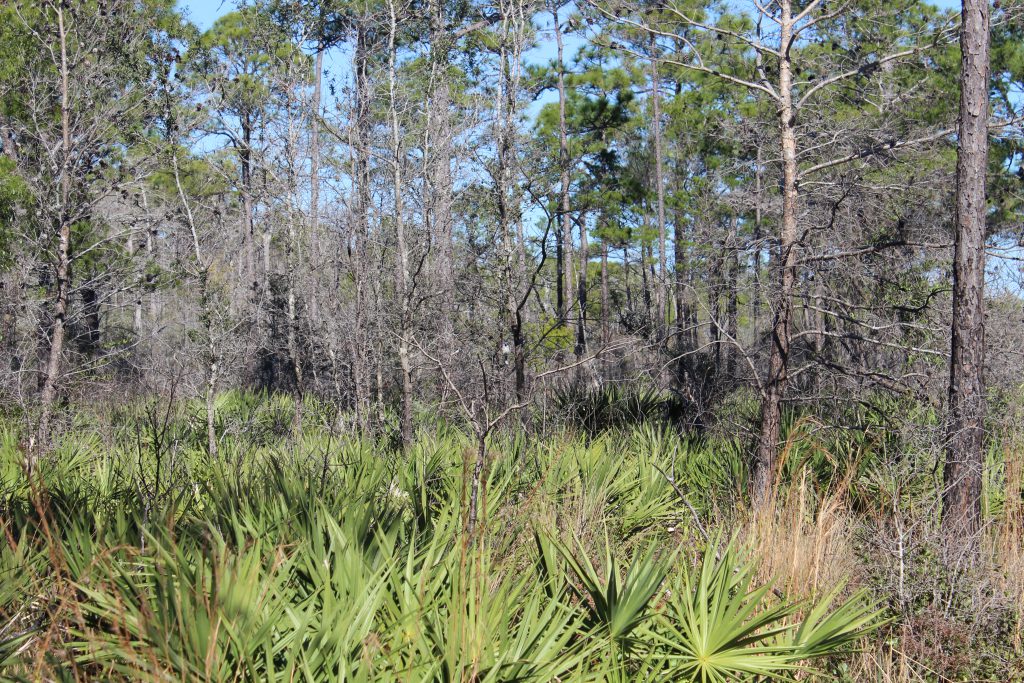
Oxygen is needed to complete the reaction we call respiration. For most, the term respiration means “breathing” and this would be correct – but it is more than that. It is an oxygen demanding reaction we all need to remain alive. In this reaction the sugar molecule glucose (C6H12O6) is oxidized to produce Adenosine triphosphate (ATP – C10H13N5O13P3). ATP is the “energy” molecule needed for cells to function – our gasoline. It fuels all metabolic reactions needed to sustain life. ATP cannot be consumed in food, it must be made in the cell and, as the reaction below shows, it requires sugar (which we get from food) and oxygen (which we inhale from the atmosphere) to work.
C6H12O6 + O2 –> CO2 + H2O + ATP
This reaction will produce 36 of the much-needed molecules of ATP with each cycle. It is known that in anaerobic respiration (the break down of glucose without oxygen) it will also produce ATP but not as much – only 2 molecules of it instead of 36. So, for most creatures’ aerobic respiration (with oxygen) is preferred and needed.
The primary source of oxygen on our planet is plants. This suggest that before plants existed there may have been little, or no, oxygen on in our atmosphere and scientists believe this was the case. When you look at the fossil records it suggests that prior to plants existence there was life (anaerobic life) but after plants the diversity and abundance of life exploded. Aerobic respiration seems to be the way to go.
As most know, plants produce oxygen in the process known as photosynthesis. This chemical reaction is used by the plants to produce the other needed respiration molecule glucose. Plants produce their own glucose and so are called producers, while other creatures, including animals, are consumers – consuming glucose in their food. The reaction for photosynthesis is –
CO2 + H2O –> C6H12O6 + O2
The excess oxygen produced in this reaction is released into the atmosphere by the plants. It makes up 20% of our atmosphere and this allows life as we know it to exist. Note… almost 50% of the oxygen in our atmosphere comes from single celled algae called phytoplankton that grow and exist at the surface of our oceans.
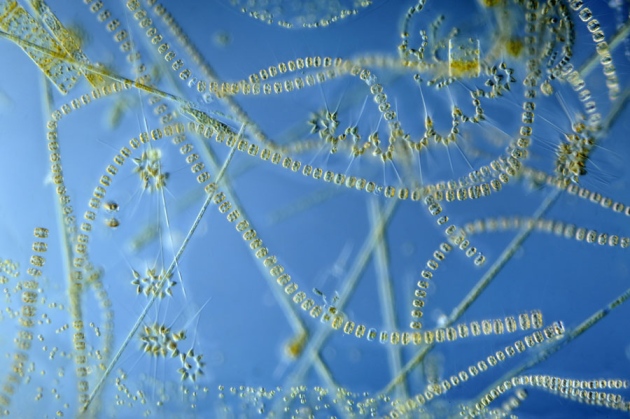
But what about aquatic creatures who do not breath the atmosphere you and I do? How do they obtain this much needed oxygen drifting in our atmosphere?
The answer is in dissolved oxygen. Oxygen, being a gas, is released into the atmosphere. Even the oxygen produced by submerged aquatic plants, like seagrasses and algae, release their oxygen as a bubble of gas which floats to the surface, pops, and is released to the atmosphere. To get that back to the creatures in the water who need it as much as we do, you have to “dissolve” it into the water.
To do this you must break the hydrogen bonds that connect water molecules to each other. Water is a polar molecule, and each molecule connects to each other like magnets using hydrogen bonds. These hydrogen bonds are weak and easy to break, but you must MOVE the water in order to do this.
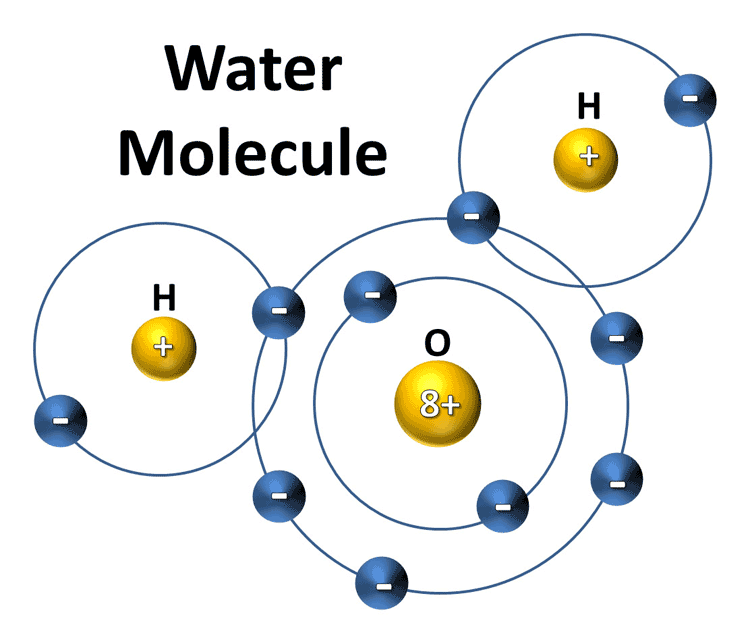
Water movement, such as waves, currents, and tides, will do it. The more movement you have the more oxygen will dissolve into it. Waterways such as the rapids of mountain rivers and waterfalls will have high concentrations of dissolved oxygen – usually over 10 µg/L. For some creatures this could be too high – like an oxygen rush to the head – but for others, like brook trout, it is perfect. They do not do well in water with dissolved oxygen (DO) concentrations less than 10.
For most waterways the DO concentrations run between 4 and 10 µg/L. Most systems run between 5-7. Waterways with a DO concentration less that 4 µg/L are termed hypoxic – oxygen deprived – and many creatures cannot live at these levels. They are literally gasping for air. I have seen fish at the surface of our local waterways when the DOs are low gasping for much needed oxygen through the atmosphere. It is also the primary reason the great crab jubilees of Mobile Bay occurs. Low levels of DO in the bay will trigger many creatures to leave seeking higher DO in the open Gulf. But for some benthic creatures – like stingray, flounder, and blue crabs – they will literally run onto the beach gasping for oxygen. The fish known as menhaden are particularly sensitive to low DOs and are one of the first to die when concentrations begin to dip below 4. When you see the surface of a waterway littered with dead menhaden it typically means there is a DO problem.
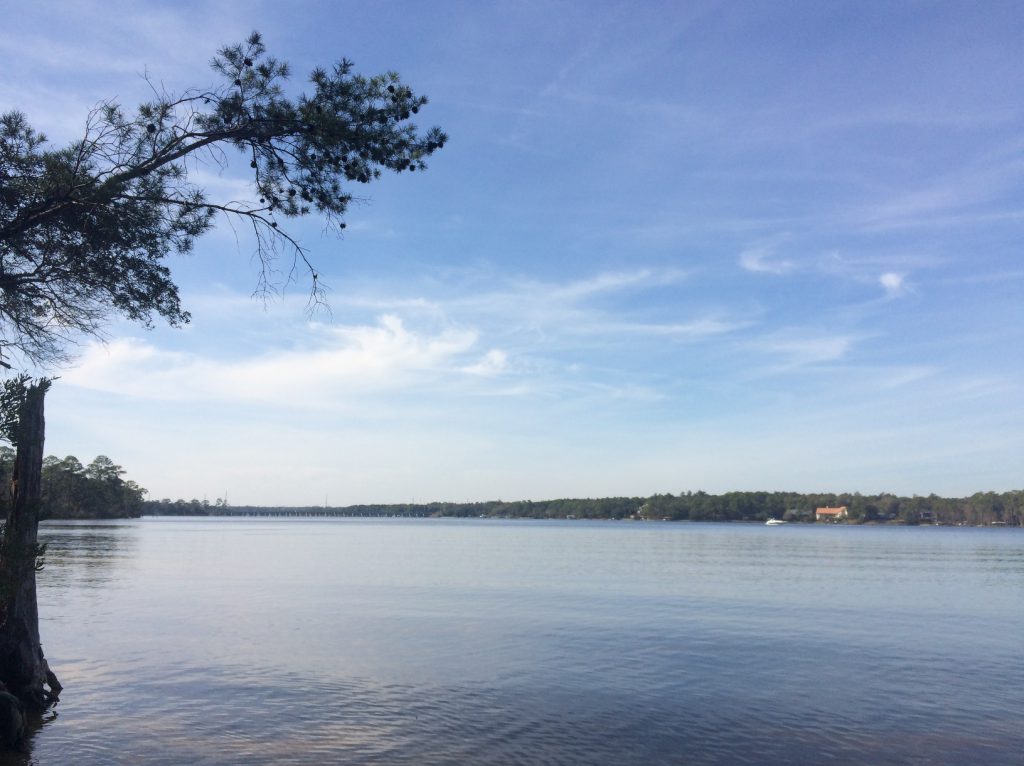
That said, some creatures, like catfish, can tolerate this and do not become stressed until the concentrations get below 2 µg/L. If they ever reach 0 µg/L (and I have seen this twice – once in Mobile Bay and once in Bayou Texar) the waterway is termed anoxic – NO oxygen. This is obviously not good. Some are familiar with the “Louisiana Dead Zone”. An area of the open Gulf of Mexico south of the Mississippi River where DO levels decline in the summer to levels where most benthic species, particularly shrimp, are hard to find. It seems “dead” – void of marine life. This is also a DO issue.
How – or why – do dissolved oxygen levels get that low?
There are three basic reasons to this answer.
- The surface is still, and little atmosphere oxygen is being “dissolved”. We have all seen calm days when the water is as slick as glass. On days like these, less oxygen is being dissolved into the system and the DO concentrations begin to drop. But how low will they go?
- The water is warm. Higher water temperatures hold less oxygen. As the water warms the oxygen “evaporates” and the DO concentrations begin to decline. If it is a warm calm day (like those during a high-pressure system in summer) you have both working against you and the DO may drop too low. Most fish kills due to DO concentrations occur during the hot calm summer days.
- What is called biological oxygen demand. All creatures within the system demand oxygen and remove it from the water column. However, in most cases, atmospheric dissolved oxygen will replace for a net loss of zero (or close to it). But when creatures die and sink to the bottom the microbes that decompose their bodies also demand oxygen. If there is a lot of dead organic material on the bottom of the waterway that needs to be broken down, the oxygen demanding microbes can significantly decrease the DO concentrations. This dead organic material is not restricted to fish and crabs that die but would include plant material like leaves and grass clippings from our yards, organic waste like feces, food waste, the carcasses of cleaned fish, any organic material that can be broken down can trigger this process.
Now picture the perfect storm. A hot summer day with no wind and high humidity over a body of water that has heavy organic loads of leaves, dead fish carcasses, and waste. BAM – hypoxia… – low DO… fish kill… which would trigger more oxygen demanding decomposition and – more dead fish – a vicious cycle.
You have probably gathered that low dissolved oxygen concentrations can occur naturally – and this is true – but they can also be enhanced by our activity. Allowing organic material from our yards (grass clippings, leaves, and pet waste) to enter a body of water will certainly enhance the chance of a hypoxic condition and a possible fish kill – which would in turn fuel lower DO and poor water quality state for that body of water. The release of human waste (food and garbage, sewage, etc.) will also trigger this. And throwing fish carcasses after cleaning at the boat dock will too.
But there is another process that more people are becoming familiar with that has been a problem for some time. The process of eutrophication. Eutrophic indicates the waterway is nutrient rich. These nutrients are needed by the plants in order to grow – and they do. Particularly the single celled algae known as phytoplankton. These phytoplankton begin to grow in huge numbers. So, abundant that they can color the water – make it darker. As mentioned above, they produce a lot of oxygen, but at night they consume it, and with SO much phytoplankton in the water they can consume a large amount of DO. The DOs begin to drop as the evening wears on and before sunrise may reach concentrations low enough to trigger a fish kill. These phytoplankton will eventually die and with the large mass of organic matter sinking to the bottom, the oxygen demand to decompose them can trigger larger fish kills. These fish kills in turn demand more oxygen to decompose and the process of eutrophication can create a waterway with very poor water quality and a habitat unsuitable for many aquatic creatures. It is not good. This is the process that causes the Louisiana Dead Zone each summer. The nutrients are coming from the Mississippi River.
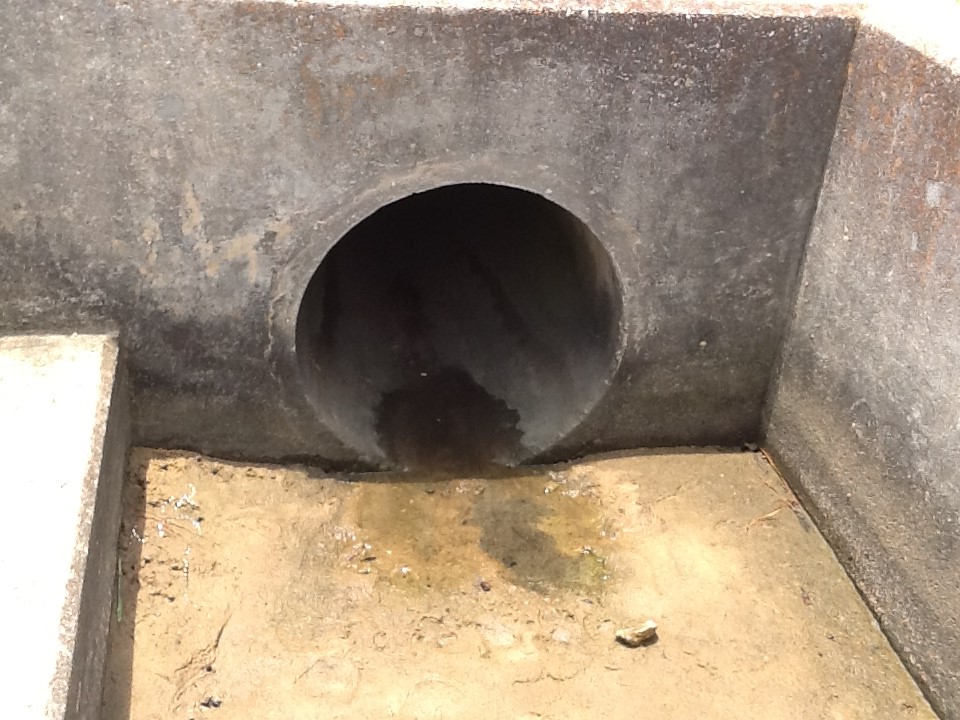
So, is there anything we can do to help reduce this from happening?
Well, remember some hypoxic conditions are natural and they will happen. But there are things we can do to not enhance them or trigger them in waterways that would otherwise not have them.
- When raking your yard, place all leaves in paper bags for pick up. This keeps the leaves from washing into the street during rain events (and we are getting plenty of those) and eventually into a local waterway. The problem with using plastic bags is that the local utility who collects them can no longer compose this into mulch. You might consider using your leaves and grass clippings for landscaping yourself.
- Watch fertilization of your yard. Many over fertilize their yards and the unused fertilizer is washed into the street and eventually into the local waterway. These fertilizers will do to phytoplankton what they were designed to do with your lawn – make them grow. Of course, not fertilizing your yard would be best, but if you must place only the amount, and type, your lawn needs. Your extension office can help you determine what that would be.
- Pick up pet waste when you take your pets out to go to the bathroom.
- If you have a septic tank – maintain it. You can also look into converting to a sewer system.
- If you are on sewer – watch what you pour down the drain. Many products – such as fats, oils, and grease – can create clogs that cause sanitary sewage overflows when we have heavy rains (and we will have heavy rains). Our local utility in the Pensacola area offers the FOG program (Fats, Oils, and Grease). In this program you can pick up a clean 1-gallon plastic container to pour your fats, oils, and grease into. Once full, you bring it back and switch for a clean empty. To find where these containers bins are located near you visit the ECUA website – https://ecua.fl.gov/live-green/fats-oils-grease.
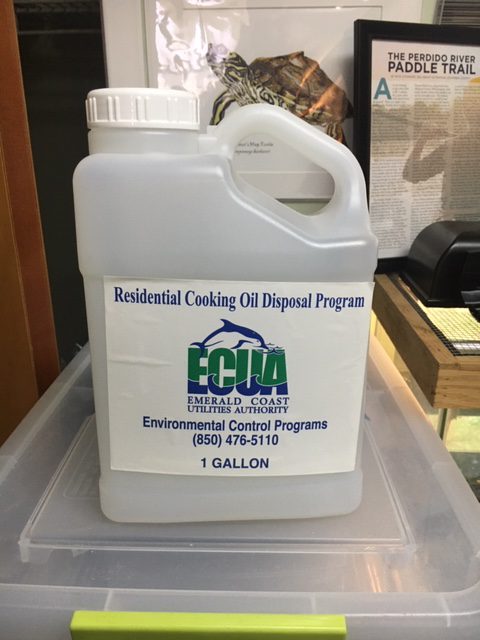
Dissolved oxygen concentrations naturally go up and down, and sometimes low enough to trigger a natural fish kill but following some of the suggestions above can help reduce how frequently these happen and can help to make our estuary healthier.
- Rattlesnakes on Our Barrier Islands; Part 4 – Thermoregulation - December 29, 2025
- Rattlesnakes on Our Barrier Islands; Part 3 – Envenomation - December 22, 2025
- St. Joe Red Tide Claiming Terrapins - December 15, 2025
